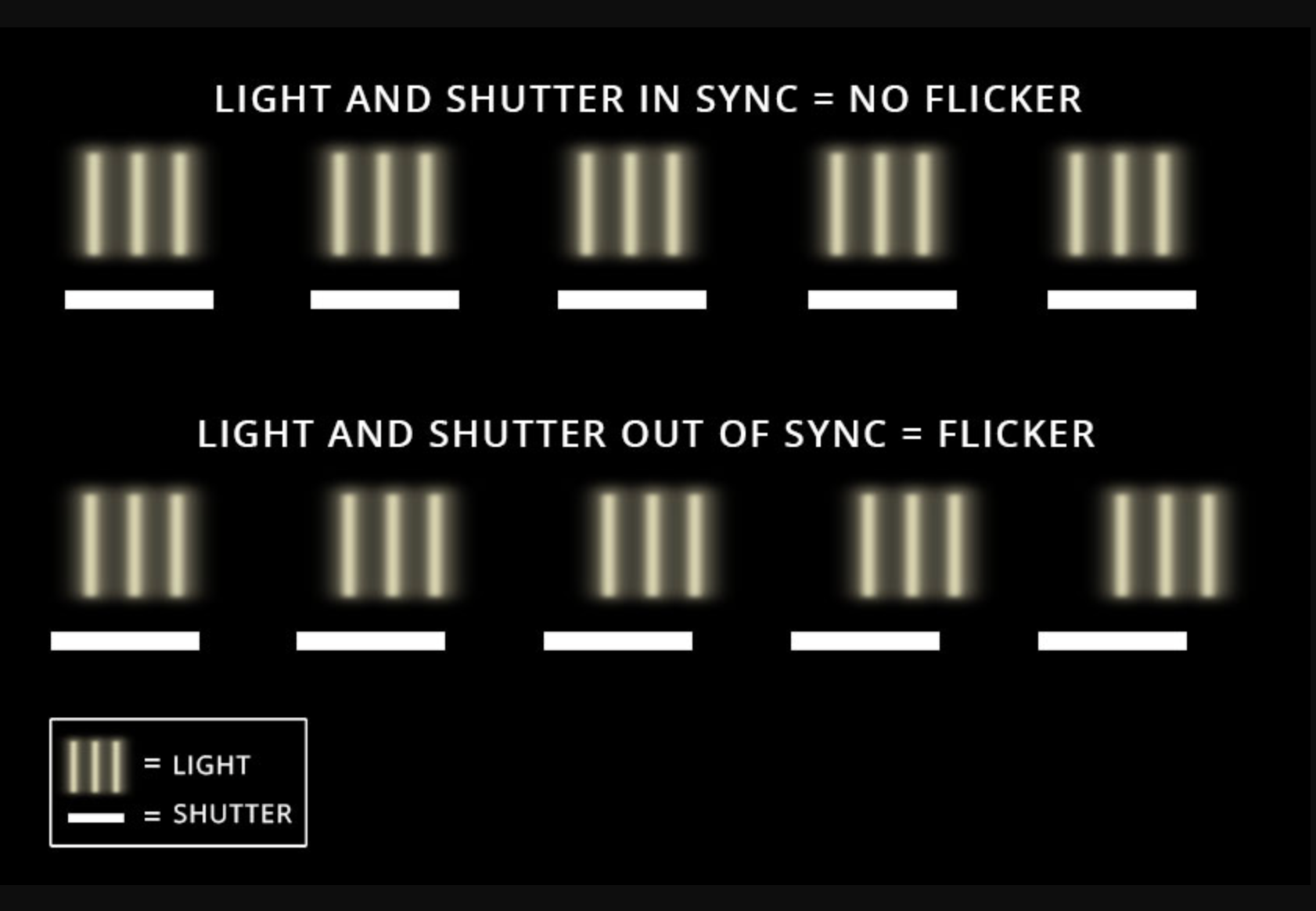Concept Keywords: Temporal light artifacts, the persistence of vision, stroboscopic, phantom array (ghosting), Broca-Sulzer effect, steganography

diagram <https://static.bhphotovideo.com/explora/sites/default/files/flicker2.jpg>
For the midterm, I'm hoping to make a prototype for the quirks of human flicker fusion threshold and the camera framerate when looking at the LED flickering. To recap, on vision, it will look like all LEDs are constantly shining, but to camera, it will experience an aliasing, as demonstrated by one of the LED flickering.
Last week, I tried it out on some neopixels to see if it behaves similarly with the regular LEDs. For neopixels, I have to lower the frequency down to at least 8 to make it look like it is not flickering.
Apparently, neopixel has an internal timing overhead because the microcontroller will be sending a data stream to change all of the neopixels state. It definitely takes some time to update every one of them.
Examples:
All recorded at 30fps
Delay on LED 1 = 20 -> 1000/20 = 50 blinks/s or Hz
Delay on LED 2 = 1 -> 1000/1 = 1000 blinks/s or Hz
Delay on LED 1 = 8 -> 1000/8 = 125 blinks/s or Hz
Delay on LED 2 = 2 -> 1000/2 = 500 blinks/s or Hz
The camera must be darkened to make the blinking more visible.
Concerns
I have concerns that the lights emitting from the neopixel that flickers faster (hence rendering as not 'flickering' on our eyes and camera) will divert our vision to not recognise that the other neopixel is blinking / flickering at slower state. It is hard to see if the other neopixel is 'blinking' when the other neopixel is shining bright constantly. A way to mitigate this is by dimming them, however, I still feel that audience may not be able to tell which neopixel is flickering when there are a number of them in a grid.
Other ideas to go around this issues
Let's look into the applications in the world to find inspiration:
1. The power plant that I saw in Hong Kong. They have an LED panel with the real-time data of the power plant. When I took a picture, the real-time information will be 'flickering' on the camera, hence rendering it unseen on documentation and only to physical eye.
Why would that make it like so?
- Security / Anti-Leak measure, the information is only available in person (not through digital documentation or surveillance)
- Low-cost, first barrier to information security
2. LED
There's a concept called scan ratio of LED. That is why a stair-step pattern or short horizontal bands flicker around the screen when shown on camera.
To avoid flicker: your LEDs should blink faster than twice the frame rate (Nyquist limit), ideally ≥200 Hz (period ≤5 ms)
References
- Sophie from class
- Jim Campbell - Exploded Flat
Elizabeth Kezia Widjaja © 2025 🙂